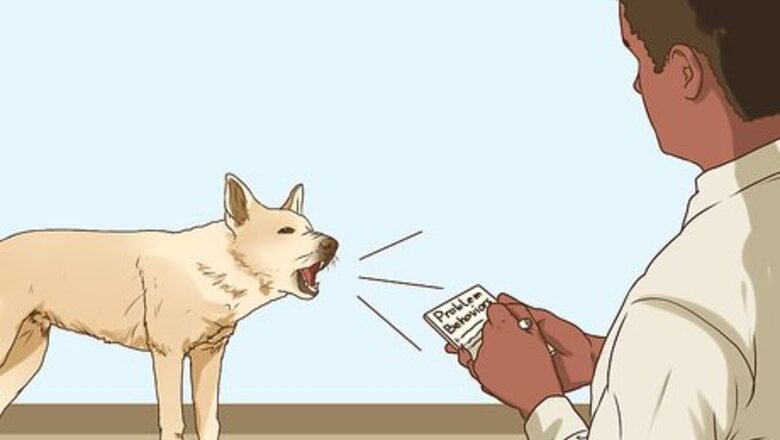
views
Developing a Plan to Tackle Negative Behaviors
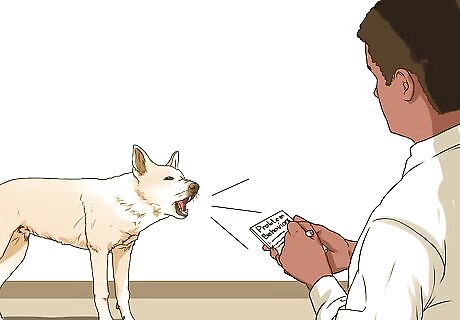
Identify the specific problem behaviors. Not all dogs disobey in the same way, so it is important to figure out exactly how, and in what situations, your dog acts in an unruly manner. Do they cause damage to the home? Do they jump on or attack your guests? Do they bark constantly? Pull out a notebook and write down every time your dog acts disruptive. Then, look over the log after a few days to determine any patterns. Using these notes, you may be able to address some of these problems on your own by removing your dog from certain environments. For example, if your dog acts rowdy at the dog park, perhaps visit the park when it is less crowded, like early in the morning. In addition, see if you can notice any triggers that bring on these behaviors, such as the doorbell. When you speak to a vet or trainer, they may be able to help you redirect or avoid these triggers.
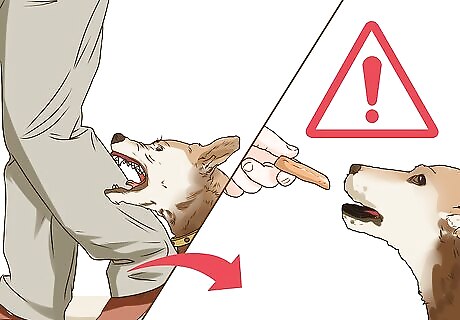
Take a close look at your past behaviors. There is a possibility that you’ve prompted, or contributed to, some of your dog’s negative reactions. Try to think of those moments where you encouraged disobedient behaviors or perhaps failed to reward positive ones. For instance, if you give your dog a treat immediately after it has just jumped on your friend, then you are rewarding your dog for a poor interaction. You can expect that your dog will then continue this type of behavior in the hopes of receiving another treat.

Talk with your vet. If you’ve tried to make a few minor lifestyle changes and they seem to have no effect, then it is time to talk with your vet. Make an appointment and bring your behavior log for them to view. Depending on the discussion, your vet may order some tests to rule out any medical reasons for your dog’s actions. Some dogs act badly when they are in pain. Intestinal disorders and allergies are some of the health concerns that can cause a normally well-behaved dog to ‘go bad.’ For instance, back or neck pain can manifest as nipping or yelping when being picked up. Make sure to talk with your vet about how any medications may impact your dog’s behavior over the long term. Some have side effects that can be worse than the current situation.

Establish clear rules. Your vet may be able to suggest some boundaries that you can establish in the home to make for a more comfortable living situation for both you and your dog. Perhaps you can keep the furniture off-limits and instead buy a nice dog bed or lounger. Maybe you stop feeding your dog table scraps and instead invest in a good dog food. The backyard could be off-limits for play until the day’s training is done. Whatever rules you set, all family members must be consistent in their boundaries and application. Otherwise, you will confuse your dog and lead to more frustration and disobedience.
Coping with Negative Behaviors Immediately
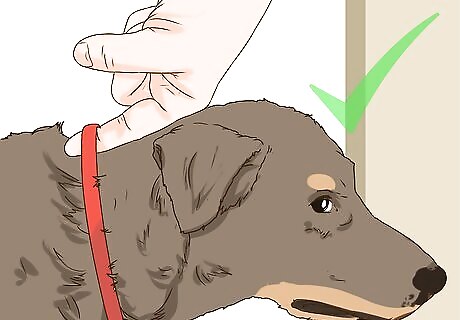
Get a well-fitting collar and leash. These devices will allow you to somewhat control the movements of your dog, especially when they are misbehaving. Go to the pet store and test out the strengths of various leads. You want a lead that your dog cannot break, but it shouldn’t be too heavy either. Make sure that the collar fits well enough so that your dog cannot slip out of it. You can do a “finger test” on the collar to determine tightness. You should be able to insert at least 2 fingers into the space between the collar and your dog’s skin.
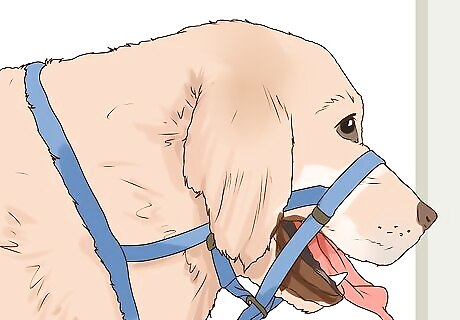
Try out head halters. For those dogs who are particularly unruly, a head halter, also called a halti or gentle leader, may be a good option. This is a series of straps that fit around the face, with or without a muzzle piece, which allows an owner to control where the dog’s nose goes, giving you much more control over the rest of the body. This is especially helpful with dogs that lunge and pull on the leash. Some head halters are designed for long-term wear and you can keep them on your dog while you continue indoor training.
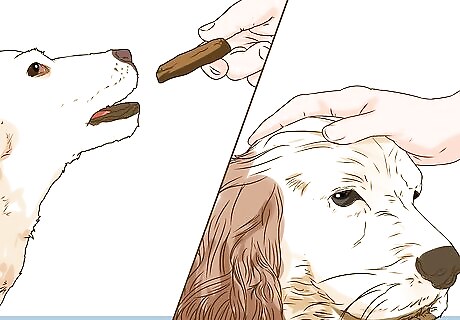
Use positive reinforcement. This method of training involves rewarding your dog’s good actions and paying little or no attention to the bad behaviors. You can reward the dog by providing tasty treats or by giving tons of affection. After your dog does something good, you want to reward it immediately in order to get the maximum benefit. It is also a good idea to reward your dog when they are behaving calmly.
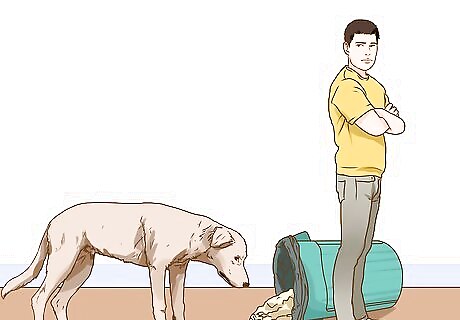
Ignore bad behaviors. Some dogs behave badly in order to get attention, even negative attention. To remedy this type of interaction, give your dog plenty of positive chances to play and learn with you. However, when they do misbehave, turn your shoulders away and make a point of paying them no attention. Remember that scolding is interpreted as attention and could be misconstrued as positive reinforcement, so walking away is the most effective solution.
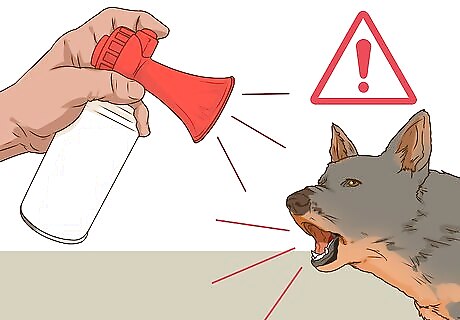
Use a disruption device. When a dog starts to misbehave they might lose control of themselves and just continue until they are exhausted. One way to stop this snowball effect is to disrupt it mid-cycle. You can keep a can filled with coins nearby or an air horn and give it a quick go whenever your dog starts to act out. However, be warned that distraction tactics are only temporary. You should still give your dog a positive outlet for their emotions.
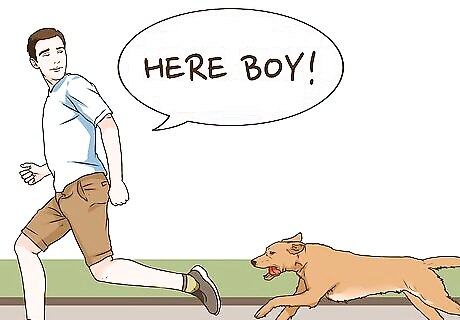
Catch your dog by running away. This may sound a bit odd, but it often works. If your dog enjoys running away from you, then make a bunch of noise and run in the opposite direction. This will usually incite their hunting instinct and they will turn and follow you. However, only do this if it is safe to do so.
Setting Your Dog Up for Positive Behavior
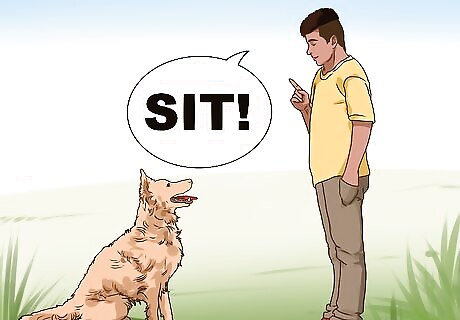
Start training early. If you adopted your dog or purchased it from a breeder, you may not have too much control over the initial training schedule. However, it is best to start training your puppy prior to 9 weeks, if possible. This is a crucial time for socializing with other puppies and humans. It is also a good time to introduce some of the rules of self-control, such as refraining from jumping or biting. Old dogs can learn new tricks, however. You’ll just need to be patient and methodical in how you introduce any desired changes. It might be helpful to choose one trick or behavior to focus on before moving on to something new. For example, you can work on teaching your dog how to sit. Or, maybe you'd like your dog to stop jumping on others.
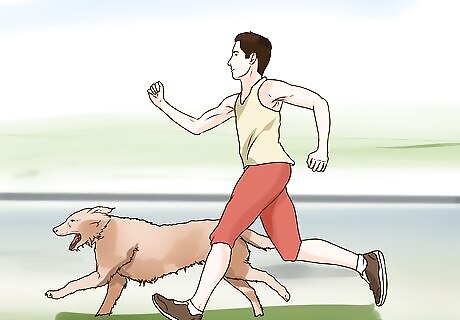
Give your dog plenty of exercise. Some breeds, such as border collies, are highly intelligent and require daily stimulation. If you fail to give them that attention, then they will find trouble elsewhere. If your dog is an active breed and begins to act in an unruly way, you may want to add in a few extra play sessions somewhere.
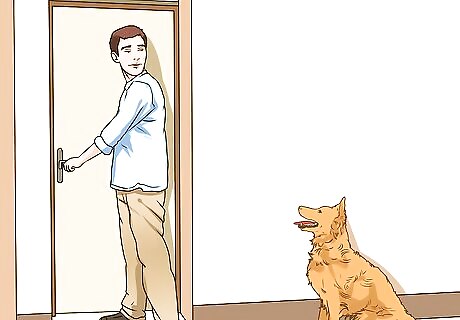
Avoid potentially problematic situations, at least at first. Place your dog in scenarios where they can ‘win.’ This gives them the best possible chance to behave in a good way and reap the rewards. This will also reduce your stress as well, as you can simply watch them behave in a good way. For example, you might close doors in your home so that your dog’s unsupervised time is limited. Or, if your dog is afraid of loud noises, you might be careful when planning trips outdoors. Try not to overstimulate your dog until they’ve matured and learned how to behave properly. For example, busy dog parks or areas with lots of screaming and running children can overwhelm your dog and create bad behaviors.
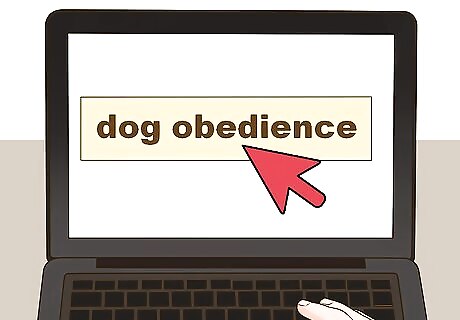
Look into dog obedience courses. Search your city and “dog obedience” to find classes in your area. This is a good way to teach your dog new skills or to reinforce lessons that they have learned, but forgotten. You can also look for a class that will address specific behavioral problems, such as biting or jumping. Look for classes that use positive reinforcement methods.
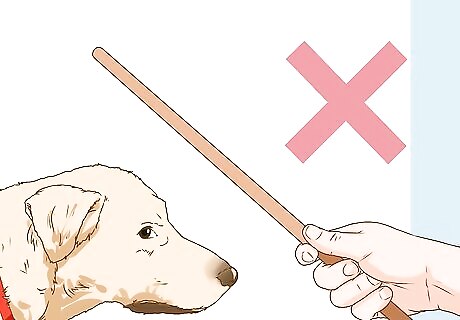
Do not physically punish your dog. No matter how frustrated you become, do not hit or strike your dog. This will only make your dog fear you and can prompt a whole new host of problem behaviors. Instead, take a deep breath and think about what you would like to happen differently in the future. Then, make sure to be consistent in establishing rules for your dog to follow.
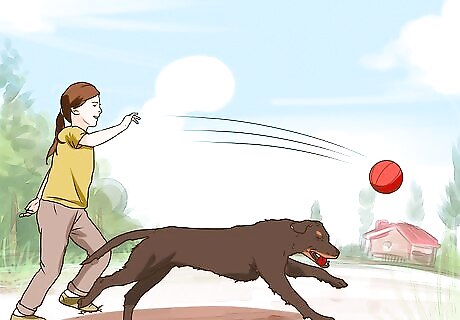
Focus on the positives of dog ownership. With all of this effort and training, you may forget the joys of interacting with and owning your dog. That’s why it is important to sometimes simply relax with your pet without an ulterior motive. Lay on the couch and cuddle during a movie. Or, go outside a play a relaxed game of ball. It may also help to post happy, positive photos of you and your dog around your home. This will remind you of the potential that is there.




















Comments
0 comment